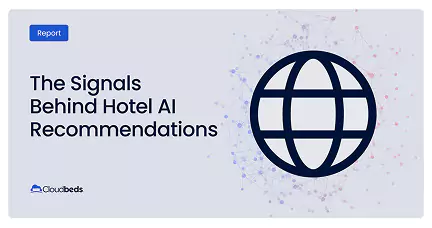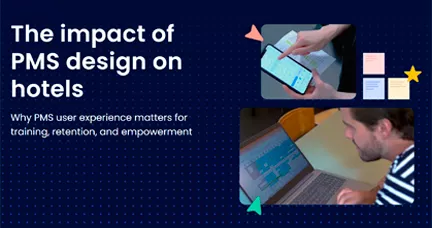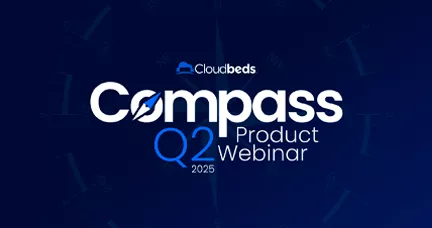Travelers rarely book without checking rates across multiple sites. They want to ensure they’re getting the best value, and that requires a little bit of research.
Hotels need to do the same. Rate shopping provides the market data to see how your property stacks up, anticipate shifts in demand, and adjust prices with confidence.
Without it, pricing turns into guesswork. With it, you gain the clarity to capture more bookings, maximize occupancy, and grow revenue—even when the market changes overnight.
Rate shopping is the practice of hotels monitoring competitors’ room rates and comparing them to their own rates. It can be used as a short-term tactic, such as a spot-check to see what competitors are charging on an upcoming weekend, to manage rate parity, or as part of a long-term revenue management strategy, with frequent rate checks to identify patterns in competitor pricing and determine how best to position one’s own rates.
The ultimate objective of rate shopping is to achieve maximum revenue and profitability for the property by growing the average daily rate (ADR) and occupancy and capturing the optimal business mix. With rate insights, lodging operators can price right every time to drive more third-party and direct bookings.
In the past, hotels checked out competitor rates by performing a daily call-around. Today, it’s much easier to visit an online travel agency (OTA) to compare pricing and track it on a spreadsheet. However, this method is time-consuming and doesn’t capture the detailed pricing data hotels need to make informed decisions.
Moreover, hotel rates change frequently, and the information collected can quickly lose relevance. For these reasons, more hospitality businesses are investing in a rate intelligence tool to automate the price comparison process and integrate it with other revenue management functions.
What is a hotel rate shopper?
A hotel rate shopping tool is a software application used by hoteliers to automate the collection and monitoring of competitor rates and availability. Rate data, sometimes referred to as market data or hotel pricing intelligence, is scraped from selected distribution channels and displayed on an interactive dashboard. This allows hoteliers to easily compare rates and availability across competitors and ensure they’re always positioned where they want to be.
A rate shopper may be standalone software, but more often, it is integrated into a revenue management system, allowing hotels to perform additional tasks from the same dashboard, like managing pricing and setting inventory controls.
6 benefits of a rate shopper
A rate shopping tool offers lodging operators several advantages, including:
- Automate the rate shopping process, freeing up revenue managers from having to maintain manual spreadsheets and allowing them more time to focus on data analysis and pricing strategy.
- Make strategic, dynamic pricing decisions rather than keeping static, seasonal rates or pricing rooms based on intuition or last year’s rates.
- View real-time rate data consolidated on a single dashboard, ensuring that pricing decisions are based on current conditions.
- Benchmark rates against competitors for specific periods, such as an upcoming conference or local event, to identify patterns in market pricing behavior and position strategically.
- Receive advance warnings of future periods of unusually high or low market demand and identify opportunities to increase or decrease rates and tighten or loosen booking conditions.
- Never miss a revenue opportunity. Dynamic pricing is especially important for hotels, given that room inventory is perishable. When a room goes unsold on a given night, that sales opportunity is lost forever.
Key features to look for in a rate shopper
Rate shopping tools range from very basic to very complex. It’s important to vet the options carefully to ensure you find a solution that offers all the features you need but doesn’t require you to pay for various bells and whistles you won’t use and probably don’t need.
For independent properties, here are some of the capabilities to prioritize.
- Real-time data. Frequent syncing of rate shopping information from chosen distribution channels (ie. GDS and OTAs) is vital to make informed pricing decisions based on current market conditions, not last week’s data.
- Ease of use. The rate shopper should be straightforward to configure, simple to learn, and easy to operate. If staff find the software difficult or confusing, they may avoid using it, missing out on revenue opportunities.
- Flexibility. Look for the flexibility to select customized compsets, choose your preferred distribution channels to track, and select a calendar view that displays long-term trends and activities on specific days of the week.
- Revenue management features. Ask about additional revenue management capabilities, such as the ability to manage rates and inventory controls from the same platform and compare current market trends with historical data like last year’s booking pace and occupancy patterns.
- Automated rules and alerts. Since you can’t monitor rates at all times, automated notifications will alert you to changes in competitor pricing based on the parameters you set. Automated rules will adjust pricing when a certain rate variance or occupancy threshold is reached – or allow you to do so manually.
- Integration with core software. Ideally, a rate shopping tool will form part of an integrated platform offered by the same vendor. This will help reduce the number of connected data points, technology silos, and vendor relationships.
- Additional features. Other helpful features include graphs to visualize rate trends relative to competitors, produce demand forecasts, automated reporting, and the ability to view rates by room type.
Rate shopping with Cloudbeds
With Cloudbeds Revenue Intelligence, rate shopping isn’t just about monitoring competitor prices—it’s about understanding the bigger picture so you can act with confidence.
Powered by our proprietary causal AI engine, Cloudbeds Revenue Intelligence combines competitor rates with real-time market data, local events, and demand forecasts up to 90 days out with up to 95% accuracy. Instead of just seeing what competitors are charging, you’ll know why prices are moving and how to respond to maximize revenue
Get rate shopping working for your hotel.
Published on 31 May, 2023 | Updated on 2 September, 2025



